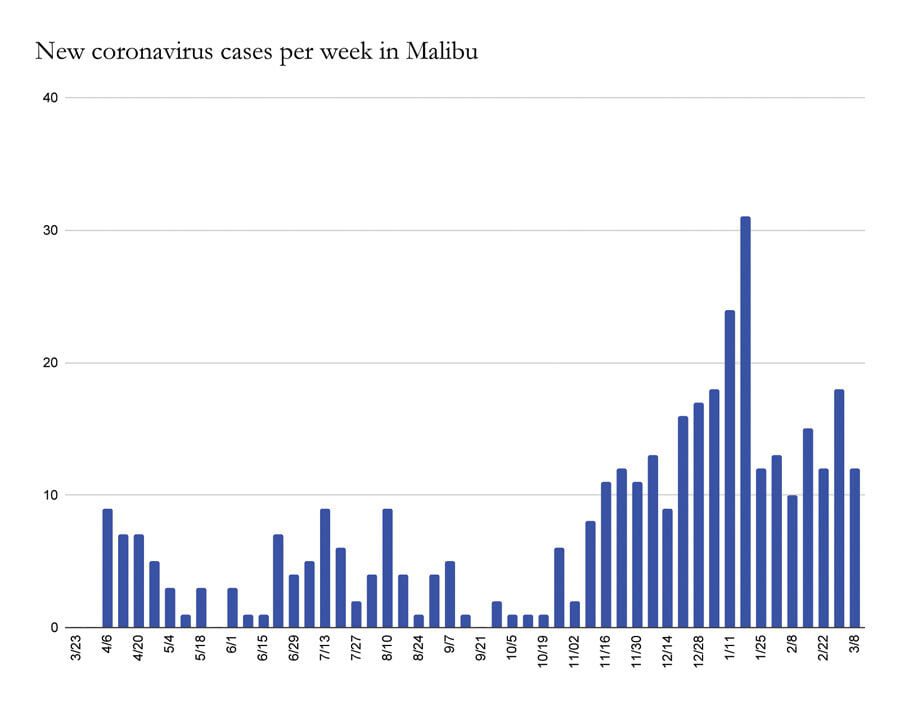
California has adopted a new state policy of reserving 40 percent of available COVID-19 vaccines for the most disadvantaged areas. The effect of this approach for Malibu residents waiting to be inoculated remains to be seen.
While vaccine appointments remain scarce statewide, this past week California officials changed vaccination distribution by allocating 40 percent of doses to those underserved communities that have been hardest hit by the virus. The policy change came the same week that vaccines became available at Malibu’s largest drugstore, CVS Pharmacy. At this time, booking an appointment at the Malibu pharmacy appears near-impossible and its website indicates all appointments are filled.
State health experts have sought to modify the vaccine rollout to address charges of inequity and inadequate outreach to those Black and Latino communities disproportionately burdened by high COVID-19 infection rates, morbidity and mortality. Policy makers say that vaccinating frontline workers and communities with greater circulating virus will both reduce overall cases and allow the state’s economy to reopen more quickly and safely.
With vaccine shortages abruptly closing some vaccination sites, depleting stock has some worried about the supply to Malibu. However, even before the change in policy, vaccine-eligible residents of Malibu had to travel outside the area to receive their shot. Vaccine sites were out of the city of Malibu in sites such as Santa Monica, Calabasas and Thousand Oaks, and other city and county-run megasites equipped to handle doses in ultra-cold regulated freezers.
While the percentage of Malibu residents vaccinated, according to data supplied by the LA County Department of Public Health, puts Malibu squarely in the top quartile of LA County cities and neighborhoods, surrounding neighborhoods such as Agoura Hills, Calabasas, Pacific Palisades and Woodland Hills all boast materially higher vaccination rates. Whether that can be explained by differing demographics is not discernible from the data posted on the LA County Department of Health website, but county-wide the disparities are striking, with wealthy enclaves such as Palisades Highlands exceeding 30 percent of the population vaccinated, while Huntington Park, with a COVID-19 death rate 10 times higher, languishes in single digits. Vaccination rate information had last been updated by the health department on Feb. 20 and current statistics could show varying levels of vaccination. Malibu has also experienced much lower rates of infection than most surrounding communities.
As of March 1, individuals working in education, emergency services and food and agriculture became newly eligible to receive the vaccines. It is anticipated that individuals with certain defined medical conditions and disabilities that heighten their susceptibility to severe illness or death from COVID-19 will be added on March 15, with estimates that this group may constitute as many as 6 million additional people in California. It is hoped that such expanded eligibility will be met with increasing shipments of vaccine to the state and county, including the recently approved single-dose Janssen COVID-19 vaccine being manufactured by Johnson & Johnson, and facilitated by the Biden administration’s invocation of the Defense Production Act, Merck. The county has indicated that this week’s vaccine allotment is 312,000 doses, its largest to date, including 53,700 of the Janssen vaccine. Public health officials continue to recommend masking and social distancing for those unvaccinated or in contact with the unvaccinated. On Monday, the Centers for Disease Control and Prevention issued new guidance stating that fully vaccinated people may gather indoors with other fully vaccinated people without wearing masks or social distancing, or “visit with unvaccinated people from a single household who are at low risk for severe COVID-19 disease indoors without wearing masks or physical distancing.” A person is considered to be fully vaccinated 14 days after receiving the second dose of the vaccine (or the first and only dose of the Johnson & Johnson vaccine).

